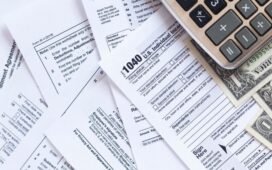Home foreclosures are on the rise. Is this the start of a housing collapse and the buying bonanza for real estate investors touted for the last two years, or a mere blip?
Foreclosure rates have steadily risen since interest rates increased in conjunction with the home affordability crisis. According to Redfin, only 15.5% of U.S. home listings were accessible financially to U.S. households in 2023. This has led to an 8% increase in foreclosure filings, according to a new report by data company ATTOM.
The report says that certain states are seeing REO numbers that were not previously experienced since the housing crash of 2008. These states saw the highest annual increase in foreclosures in February 2024:
- South Carolina: Up 51%
- Missouri: Up 50%
- Pennsylvania: Up 46%
- Texas: Up 7%
- Indiana: Up 0.8%
Shifting Dynamics
“The annual uptick in U.S. foreclosure activity hints at shifting dynamics within the housing market,” said Rob Barber, CEO at ATTOM, in a press release about the report. “These trends could signify evolving financial landscapes for homeowners, prompting adjustments in market strategies and lending practices. We continue to closely monitor these trends to comprehend their complete effect on foreclosure activity.”
That said, it’s probably not the start of a foreclosure landslide. The annual increase does not represent a widespread foreclosure epidemic, as other states appear more stable. In fact, there was a decrease in foreclosures annually in 28 states, hinting that the U.S. foreclosure situation is currently in flux, with employment a big factor.
However, should high-interest rates persist and more adjustable-rate mortgages adjust upwards, we could see a greater increase in foreclosures, even in states with higher employment.
Cities Are Feeling the Pain
Big cities are far from immune to foreclosures. Higher loan amounts, along with stricter short-term rental laws, could be a contributing factor in seeing foreclosures in urban areas with populations greater than 200,000. Here are the numbers for five of them as of February 2024:
- New York City: 1,367 foreclosure starts
- Houston: 998 foreclosure starts
- Los Angeles: 808 foreclosure starts
- Chicago: 792 foreclosure starts
- Miami: 777 foreclosure starts
A probable reason for increased foreclosures is the market playing catch-up since the pandemic moratoriums, which allowed delinquent homeowners, many of whom lost their jobs in 2020, to stay in their homes temporarily. Although these restrictions were extended, they have since expired, causing owners to lose their homes.
An Opportunity to Negotiate
Though foreclosures are sporadic nationwide, the affordability crisis has meant a small buyer pool in some markets ready to purchase homes at retail prices. Despite this and the lack of inventory, banks have been unwilling to negotiate big discounts.
However, “it’s worth noting that the rise in foreclosures could lead to an increased influx of distressed properties onto the market, which would create a buyer’s market with opportunities for those who are looking to invest in real estate,” Michael Branson, CEO of All Reverse Mortgage, told Yahoo! Finance. “This could decrease prices or rental costs over time and provide a great opportunity for investors or people looking to purchase a home.”
Commercial Foreclosures: The Fire Sale Is On
Well-publicized chaos in the commercial real estate market has led to a spate of foreclosures, allowing cash-rich investors to scoop up multiple deals. As with single-family homes, commercial lenders offered underwater investors extensions and modifications on empty office buildings, apartment complexes, and hotels in need of repair, crippled by increased construction costs and supply chain problems.
Now, their patience has worn out. Soaring interest rates have meant that investors with floating-rate debt cannot make payments, and savvy buyers who sat out the pandemic waiting for an opportunity like this will pounce.
“We’re in a period of time where it’s great to have dry powder,” Rich Banjo, co-president of Artemis Real Estate Partners, which buys distressed properties through a $2.2 billion fund it closed last year, told the Wall Street Journal.
Cash-Rich Investors Are Cleaning Up
The same WSJ article states that global real estate funds operated by private equity firms were sitting on $544 billion in cash as of the second quarter of last year—a record level, and up from $457 billion at the end of 2022, according to data firm Preqin, with the majority of money dedicated to finding distressed real estate.
Norfolk, Virginia-based Harbor Group International spent more than $600 million over the past year on seven apartment building developments—including Pine Ridge and Locklyn West Palm, both in West Palm Beach, Florida, struggling to attract tenants. With $2.2 trillion in commercial mortgages scheduled to mature between now and the end of 2027, according to data firm Trepp, Harbor’s buying bonanza could be the start of a commercial real estate feeding frenzy.
Small investors could also benefit by joining forces and syndicating smaller apartment building deals that struggle with the same financial headwinds as the bigger players.
Final Thoughts
Without the tailwind of interest rates coming down, expect to see more foreclosures in the single-family home market and commercial real estate—both office and residential. A generally robust economy and low unemployment have allowed the Federal Reserve to hold the line for now with interest rates to stave off inflation.
In commercial real estate, the dam has already sprung a leak and threatens to burst entirely. Single-family and small multifamily real estate are under quite the same threat, but as we have seen, without jobs matching interest rates, foreclosures will continue to rise. It’s times like this when syndicators and deep-pocketed investors make their fortunes.
Exclusive Breakdown and Data Analysis of the Hottest Region for Investors
It’s no secret the Sunbelt has been a primary focus of investors for years due to appreciation and rent growth. But which markets offer the best opportunities for cash flow?
Download our Sunbelt Market worksheet for a synopsis of the most popular metros and states for investors, and get the full data for all states and markets in our accompanying Sunbelt Market Intel spreadsheet.

Note By BiggerPockets: These are opinions written by the author and do not necessarily represent the opinions of BiggerPockets.














